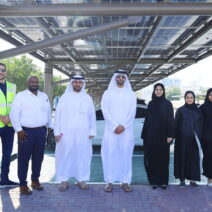Energy conservation is an intricate tapestry woven into the essence of sustainable development, and governments play a pivotal role in this endeavor. By enacting policies that prioritize energy conservation, they can reshape the landscape of energy consumption, much like a sculptor meticulously chiseling a block of marble into a work of art. This article explores the multifaceted mechanisms through which governments can foster a culture of energy efficiency and catalyze substantive change in energy usage patterns.
One of the foremost strategies governments can employ is the implementation of rigorous regulatory frameworks. Such frameworks act as the bedrock of energy conservation initiatives. For instance, enforcing strict energy efficiency standards for appliances and vehicles ensures that only the most energy-efficient products permeate the market. Governments can require manufacturers to adhere to these standards, thereby compelling them to innovate continuously. This regulatory approach not only conserves energy but also energizes the economy by creating jobs in sectors focused on efficiency technologies.
In parallel, governments can incentivize energy efficiency through financial mechanisms such as tax credits, rebates, and subsidies. By effectively lowering the cost barrier for consumers and businesses to invest in energy-efficient technologies, they can create a more enticing market environment. It is akin to nurturing a seedling with water and sunlight; the right conditions will allow energy-efficient investments to thrive. Moreover, these financial incentives can be tailored to target specific demographics, encouraging low-income households to upgrade their energy infrastructure and thereby reduce their overall energy consumption. The result is a win-win scenario—while individuals and businesses save money, the environmental footprint diminishes.
Another vital avenue is the promotion of research and development. Government funding for innovation in energy-efficient technologies is akin to lighting a fire under a cauldron of potential. Public-private partnerships can be pivotal in this regard. By collaborating with universities, think tanks, and private firms, governments can catalyze technological advancements that previously existed only as ethereal ideas. From cutting-edge insulation materials to innovative lighting systems, these partnerships can yield products that redefine energy consumption and sustainability.
Alongside these direct measures, education is paramount in the quest for energy conservation. Governments must embark on vigorous campaigns to raise public awareness regarding energy consumption’s implications. This should include comprehensive programs in schools, public service announcements, and community workshops designed to demystify the complexities of energy use and its environmental consequences. When individuals understand the direct impact of their energy choices—whether it’s the decision to turn off lights or invest in energy-efficient appliances—they become more likely to act. Education transforms energy conservation from an abstract concept into a tangible lifestyle choice, much like teaching someone the joy of cooking turns them from a mere consumer of food into a creator.
Furthermore, governments can foster community engagement by supporting grassroots movements and local initiatives focused on energy conservation. These initiatives often resonate deeply with citizens, engendering a sense of collective responsibility. By providing grants or resources to community-led projects, governments can amplify the effects of local energy-saving efforts. Think of this as laying down stepping stones in a brook; as more stones are placed, the pathway becomes clearer. When communities actively participate in energy conservation, the impact multiplies, creating rippling effects that reach far beyond individual actions.
In the realm of urban planning, governments have a unique opportunity to embed energy-efficient design into the very fabric of cities. Implementing smart city initiatives that integrate renewable energy sources, enhance public transportation, and promote walkability can significantly reduce energy consumption. Smart grids and energy management systems can optimize energy distribution, making it easier for consumers to benefit from renewable energy sources. This holistic approach is akin to conducting an orchestra, where each element plays harmoniously to produce a symphony of efficiency. Only through thoughtful urban design can governments truly capture the essence of energy conservation on a macroscale.
Moreover, international cooperation is essential in addressing energy conservation on a global scale. Governments must collaborate across borders to share best practices, technological advancements, and regulatory successes. International agreements, such as the Paris Accord, serve as essential platforms for fostering dialogue around energy reduction strategies. These cooperative efforts act as a beacon, guiding nations toward a common goal of sustainable energy practices that transcend geographical boundaries. Together, nations can create a narrative of energy conservation that is inclusive and expansive, reminiscent of a global movement uniting individual stories into a powerful collective.
In conclusion, the role of governments in conserving energy is multifaceted and of paramount importance. Through robust regulations, financial incentives, educational initiatives, community engagement, innovative urban planning, and international cooperation, policymakers can weave a narrative of energy conservation that is compelling and effective. Like a masterful storyteller, they can accentuate the uniqueness of each contribution while ensuring that the central theme—sustainable energy use—remains clear and resonant. As we navigate the complex terrain of climate change, the actions taken today by governments are not mere policy choices; they are the brushstrokes painting a future where energy conservation is not only a goal but a way of life.







